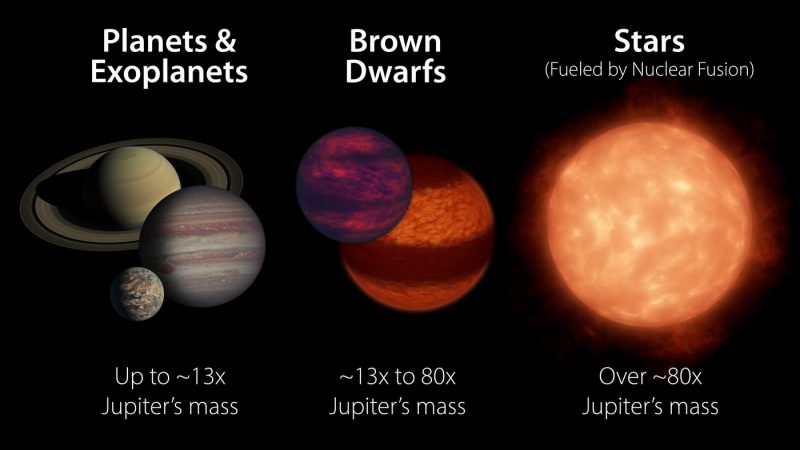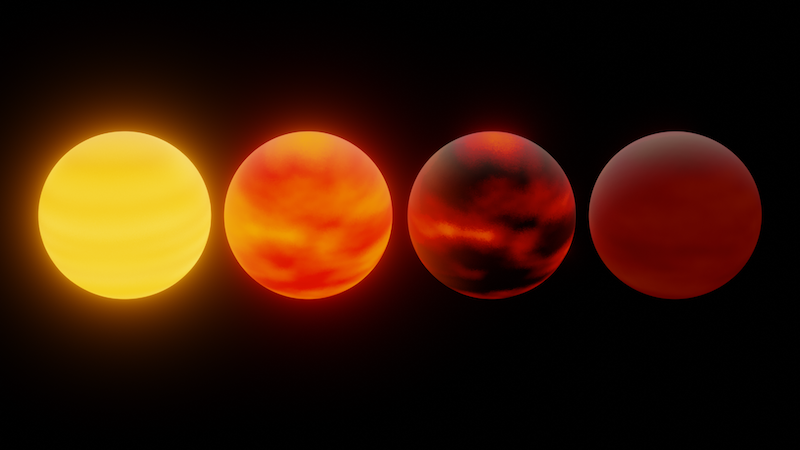
Another 1st for Webb
The James Webb Space Telescope has directly detected clouds of sand in the atmosphere of one of the star-planet hybrids known as a brown dwarf. These thick clouds aren’t made of water vapor like Earth’s clouds. Instead, they’re composed of tiny particles of silicate. Scientists had hypothesized the existence of sand clouds for exoplanets. But Webb’s new observations – reported September 5, 2022 by Science Alert – are the first verified discovery.
The research team submitted a paper on their findings to AAS journals (not yet peer-reviewed).
The new discovery marks another first for the space telescope, which is located at some four times the moon’s distance from Earth.
Earlier this month, NASA announced that Webb took its first image of an exoplanet orbiting a distant star. Just a few days before that, Webb scientists said they detected carbon dioxide in another exoplanet’s atmosphere, the first-ever confirmed finding of the gas on another world outside our solar system.
Webb detects sand clouds
Brown dwarfs are objects in space whose masses fall between that of giant planets – like Saturn and Jupiter – and the smallest stars. Webb’s new discovery involves a brown dwarf called VHS 1256-1257 b. It is 72 light-years away from Earth and about 19 times more massive than Jupiter. Astronomer Brittany Miles of the University of California of Santa Cruz and her James Webb Space Telescope (JWST) team colleagues discovered the evidence for the sand clouds in data from the Webb telescope.
The sand clouds are composed of silicate mineral particles. Those particles are most likely forsterite, enstatite or quartz, according to the team scientists. They are also probably submicron (less than a micron) in size, like particles in smoke or smog.
Scientists have hypothesized that such clouds could exist on brown dwarfs or exoplanets, but this is the first time they have been directly detected. From the paper:
The spectral shape of VHS 1256 b is influenced by disequilibrium chemistry and clouds. We directly detect silicate clouds, the first such detection reported for a planetary-mass companion.
Silicate clouds – aka sand clouds – can only form on hot worlds. That’s because silicates require very hot temperatures to vaporize. You need atmospheric temperatures between about 1,000 degrees C (1,832 degrees F) and 1,700 C (3,092 F). But in atmospheres hotter than the top end of this range, silicates remain a vapor.

Webb Telescope a ‘trailblazer’
The researchers found that the atmosphere of VHS 1256-1257 b is quite complex. In addition to the silicate clouds, Webb also detected several other gases and elements. As the paper stated:
Water, methane, carbon monoxide, carbon dioxide, sodium and potassium are observed in several portions of the JWST spectrum based on comparisons from template brown dwarf spectra, molecular opacities and atmospheric models.
As mentioned previously, Webb detected carbon dioxide on another exoplanet as well, making this the second world outside our solar system where Webb has found evidence of CO2.
The new brown dwarf observations from Webb will be invaluable for future observations of other brown dwarfs. As the researchers stated in the paper:
These initial results from the [Webb] early release science observations are groundbreaking, and also obtainable for numerous other nearby brown dwarfs that will be observed in future observation cycles. This observatory [the Webb telescope] will be a trailblazer, pushing our understanding of atmospheric physics in planetary-companions, brown dwarfs and exoplanets for years to come.

More about brown dwarfs
Brown dwarfs are unusual objects, kind of halfway between the largest planets and the smallest stars. They are more massive than planets like Jupiter, but not massive enough for hydrogen fusion to ignite in their cores. This leaves them in a limbo state where they are not quite massive enough to become actual stars. They do, however, still emit their own heat and light, unlike planets. They are typically defined as a body lying in the range of greater than 13 and less than 80 Jupiter-masses.
Some brown dwarfs orbit stars or other brown dwarfs, others travel around in the galaxy all on their own.
Bottom line: NASA’s Webb telescope has discovered clouds of sand in the atmosphere of a brown dwarf 72 light-years away. Such clouds have been long hypothesized to exist, but not confirmed until now.











